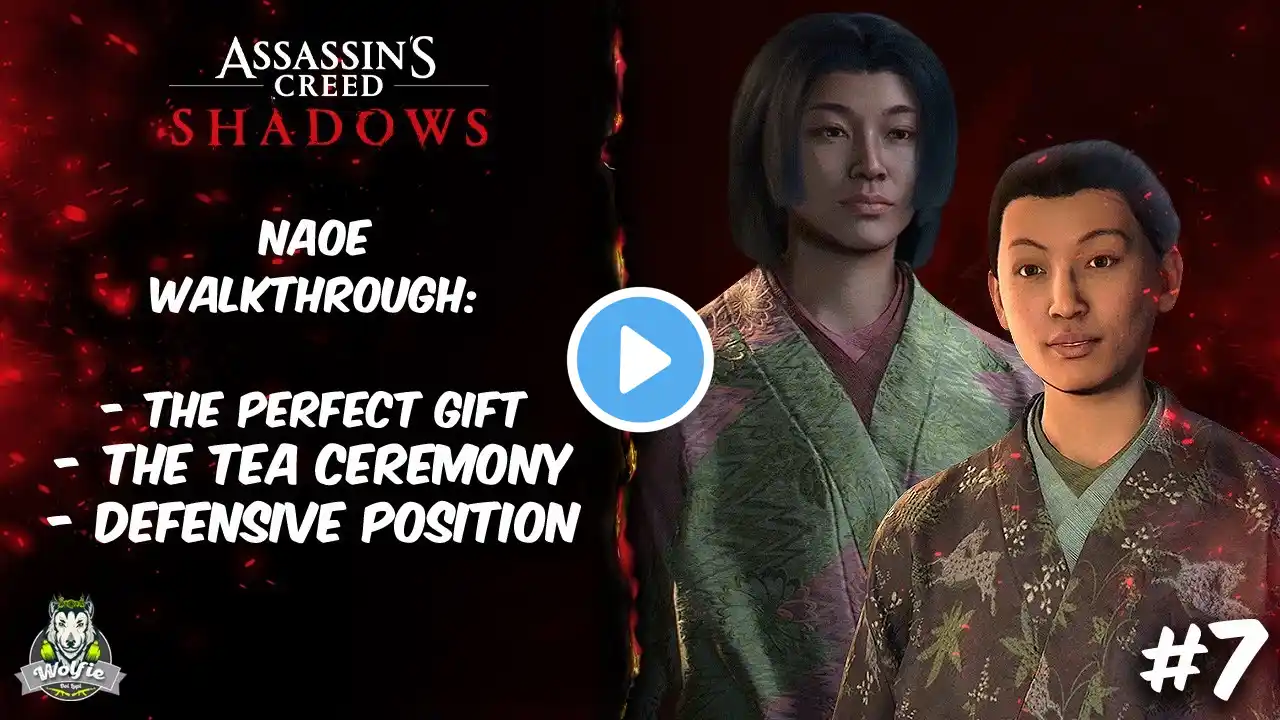
A Perfect Assassination | Assassin's Creed | Game Walkthrough Part 9
Assassin’s Creed (2007) is the first game in Ubisoft’s renowned franchise, and it set the stage for one of the most celebrated series in gaming history. Developed by Ubisoft Montreal, it introduced players to a mix of historical storytelling, stealth, and open-world exploration. ________________________________________ Plot and Story The story of Assassin's Creed is divided into two timelines: the modern-day narrative and the historical narrative. 1. Modern-Day Storyline • The protagonist is Desmond Miles, a bartender kidnapped by a company called Abstergo Industries, which is secretly the modern incarnation of the Templar Order. • Desmond is forced to use a machine called the Animus, which allows him to relive the genetic memories of his ancestors. • Abstergo's goal is to locate an artifact known as the Piece of Eden, a powerful object created by an ancient precursor race. 2. Historical Narrative • Desmond’s ancestor is Altaïr Ibn-La'Ahad, a member of the Assassin Brotherhood during the Third Crusade in 1191 AD. • Set in the Holy Land, the game takes place across three major cities: Jerusalem, Acre, and Damascus, as well as the Assassin headquarters in Masyaf. • Altaïr begins the game as a skilled but arrogant Assassin who fails a critical mission. This failure causes his mentor, Al Mualim, to demote him and assign him a redemption quest to eliminate nine high-profile Templar targets. • Over time, Altaïr uncovers a deeper conspiracy within the Brotherhood and learns of the Templars' plans to use the Piece of Eden to manipulate humanity. ________________________________________ Gameplay The gameplay in Assassin’s Creed introduced several mechanics that became staples of the franchise. 1. Parkour and Free-Running • Players can climb buildings, scale walls, and leap across rooftops seamlessly, providing unparalleled freedom of movement for its time. • The ability to explore large, open cities was groundbreaking, and each city was designed with distinct architectural styles. 2. Stealth Mechanics • The game emphasizes stealth-based gameplay, where blending into crowds, sitting on benches, or hiding in haystacks are key to avoiding detection. • Players can perform "social stealth", using civilians as cover to get close to their targets. 3. Assassinations • Each mission involves gathering intel about a target through eavesdropping, interrogations, pickpocketing, or completing side tasks. • After collecting enough information, Altaïr carries out an assassination, often followed by a daring escape. 4. Combat System • The game uses a counter-based melee combat system, where timing is critical to parry and defeat enemies. • Altaïr’s weapons include: o The Hidden Blade: A signature weapon for stealthy kills. o Swords, daggers, and throwing knives for direct combat. ________________________________________ Characters • Altaïr Ibn-La'Ahad: The main protagonist. A skilled yet flawed Assassin who learns humility and wisdom throughout the game. • Al Mualim: The leader of the Assassin Brotherhood and Altaïr’s mentor. His true motives are revealed later in the story. • Robert de Sablé: The Grand Master of the Knights Templar and one of Altaïr’s primary targets. • Desmond Miles: The modern-day protagonist whose story frames the events of the game. ________________________________________ Themes The game explores philosophical themes, such as: • The conflict between free will (Assassins) and control (Templars). • The morality of killing for a greater cause. • The idea that history is written by those in power. The famous Assassin motto is introduced: "Nothing is true, everything is permitted." ________________________________________ Graphics and Presentation • Assassin’s Creed was visually stunning for its time, showcasing highly detailed cityscapes and fluid animations. • The game’s use of lighting and atmosphere made each location feel authentic and alive. • The Animus interface added a unique sci-fi aesthetic to the historical narrative. ________________________________________ Reception The game received critical acclaim for its innovative mechanics, historical setting, and storytelling, though it wasn’t without criticism: • Strengths: o Revolutionary parkour and open-world exploration. o Engaging story that blended history and science fiction. o Stunning visuals and immersive environments. • Criticisms: o Repetitive mission structure (intel gathering often felt monotonous). o Limited variety in side activities. ________________________________________ Legacy • Assassin’s Creed was the foundation for the franchise, introducing key mechanics and the overarching conflict between Assassins and Templars. • Its success led to the creation of sequels that refined and expanded upon its ideas, with Assassin's Creed II (2009) being widely regarded as a major improvement.



















